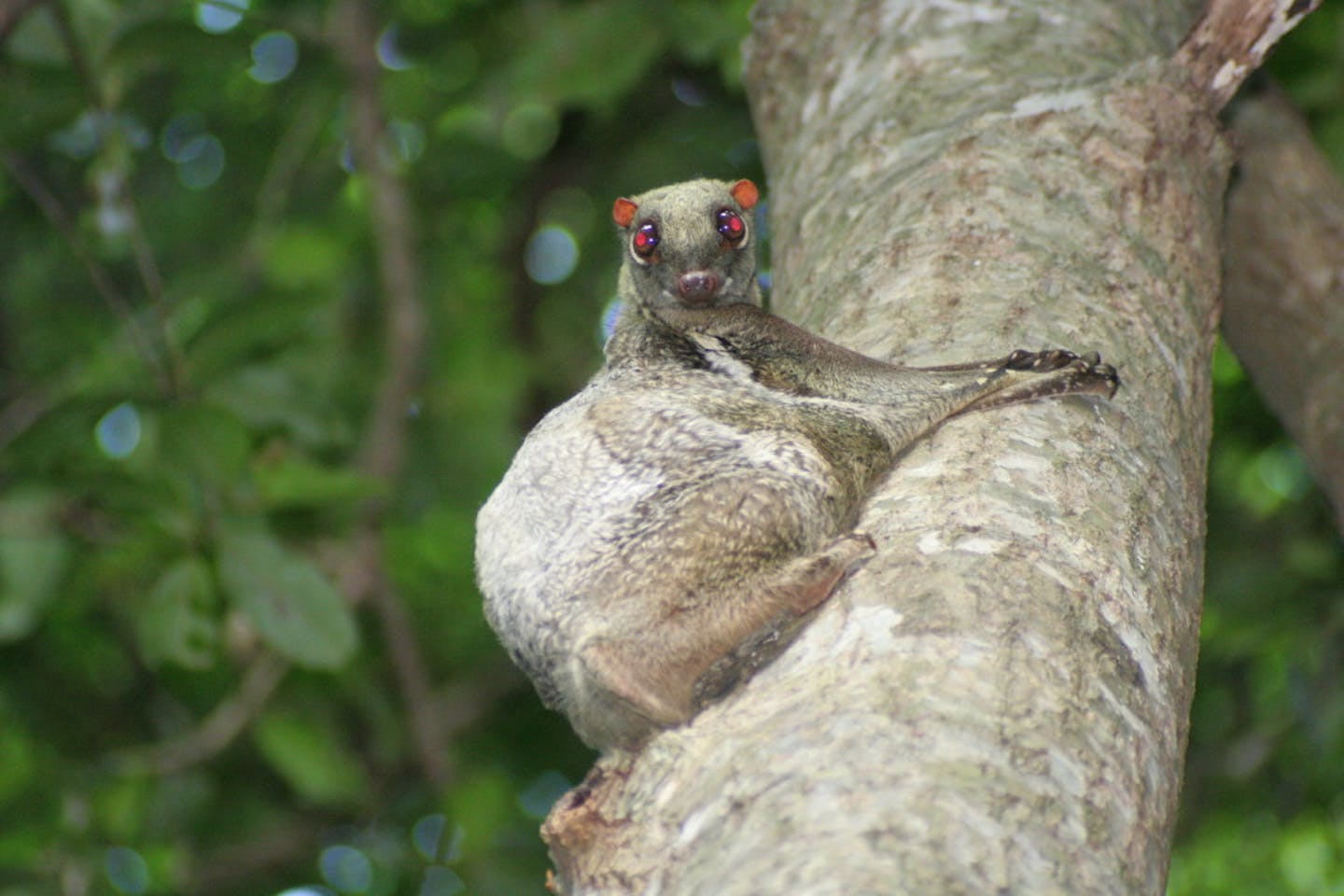Colugos: remarkable gliders traveling up to 200 feet
- Nature Conservation
- Land Conservation
- Wildlife
- Mammals
- Malaysia & Western Indonesia
- Indomalaya Realm
Each Wednesday, One Earth’s “Species of the Week” series highlights a relatively unknown and fascinating species to showcase the beauty, diversity, and remarkable characteristics of our shared planet Earth.
When, you catch sight of a colugo gliding between the trees, you might think you’re witness to something prehistoric - and you wouldn’t be wrong. Colugos are mammals from an ancient lineage, diverging from other mammals more than 80 million years ago. Just two existing species comprise the entire family Cynocephalidae and the order Dermoptera. Recent genetic sequencing revealed that colugos are the closest living relative to primates — the group that includes great apes and humans. Sometimes called 'flying lemurs', colugos are not actually closely related to lemurs, even if they share a slight resemblance.
Colugos can glide remarkably long distances, up to 200 feet from tree to tree, due to the fact that the mammal is basically just a big flap of skin. Its fur-covered membrane, called a patagium, stretches from its face to the tips of its tail and claws. According to scientists, the patagium creates the greatest surface area possible between the colugos’ limbs without the mammal ever having evolved an entire wing like bats did.
Generally they are mottled grey or green-grey in color, but some specimens are reddish to yellowish-orange. During the day they rest high in the trees, clinging to trunks or hiding in tree holes. Their fur blends in with the tree so they they are camouflaged from predators, which include pythons, yellow-throated martens, long-tailed macaques, and owls. At dusk they become active, gliding from trunk to trunk like sheets of paper blown on the wind. They’re so good at gliding, that mothers carry their underdeveloped and fragile-boned young along from tree to tree without any problem keeping them safe and secure.

Creative Commons.
Colugos are strict herbivores, predominantly eating young leaves from many tree species, chewing with their uniquely comb-shaped teeth, which are also adept at digging parasites out of their fur.
Their huge, glowing red eyes give them excellent night vision and depth perception, which one can imagine might be useful when gliding between trees in the middle of the night.
Colugos range from Burma, Indochina and Southern Thailand to Peninsular Malaysia, Singapore and the Indonesian islands of Sumatra and Java. They also occur throughout Borneo. A second Colugo species inhabits the southern Philippines. Thankfully, they’re no good at living in captivity, as most facilities couldn’t provide the kind of space they need for gliding. Without that kind of freedom, they can’t keep their patagium dry and well-maintained. Yet, in the wild, the colugo is threatened by the opposite problem: too much space caused by deforestation. With forests thinning out, the colugo falls to the ground when it can’t find a tree near enough to land on, which makes it easy prey. The colugo evolved to thrive high up in dense canopies.

.png?auto=compress%2Cformat&w=200)

